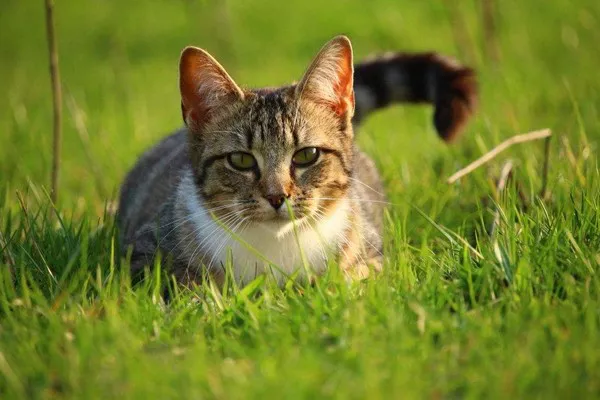Basset Hounds, with their droopy ears and soulful eyes, have captured the hearts of dog lovers worldwide. But beyond their charming appearance lies a rich history and a variety of types within the breed. Originating in France, Basset Hounds were bred for their exceptional sense of smell and ability to track game, particularly small game like rabbits and hares. Their name is derived from the French word “bas,” meaning low, reflecting their characteristic short legs and low stature.
Different Types of Basset Hounds
Classic Basset Hound: The classic Basset Hound is the most well-known type, with its iconic droopy ears, soulful eyes, and long body. It typically stands between 12 to 15 inches tall at the shoulder and weighs between 40 to 65 pounds. Their coat is short and smooth, usually in tricolor patterns of black, white, and tan.
Petit Basset Griffon Vendéen: The Petit Basset Griffon Vendéen, or PBGV for short, is a smaller version of the Basset Hound. It has a rough, shaggy coat and a lively, energetic personality. PBGVs are known for their keen sense of smell and are often used in hunting and tracking activities.
Grand Basset Griffon Vendéen: Similar to the PBGV but larger in size, the Grand Basset Griffon Vendéen (GBGV) is a versatile hunting dog with a distinct rough coat and long, droopy ears. They are known for their endurance and stamina in the field, making them excellent companions for hunters.
Basset Artesien Normand: The Basset Artesien Normand is a rare type of Basset Hound with a more slender build and shorter ears compared to the classic Basset. They were originally bred in Normandy, France, for hunting small game in dense cover.
Basset Bleu De Gascogne: Originating from the Gascony region of France, the Basset Bleu De Gascogne is a striking breed with a blue mottled coat and droopy ears. They are known for their excellent scenting ability and are often used in hunting deer and wild boar.
Basset Fauve De Bretagne: The Basset Fauve De Bretagne is a smaller type of Basset Hound with a distinctive fawn-colored coat. Despite their small size, they are fearless hunters with a strong prey drive and a friendly, affectionate demeanor.
Physical Characteristics
Each type of Basset Hound exhibits unique physical characteristics, although they all share the characteristic short legs and long body. The classic Basset Hound has a smooth, short coat in tricolor patterns, while the PBGV and GBGV have rough, shaggy coats. The Basset Artesien Normand is more slender and has shorter ears, while the Basset Bleu De Gascogne has a striking blue mottled coat. The Basset Fauve De Bretagne is smaller in size with a fawn-colored coat.
Temperament and Behavior
Basset Hounds are known for their gentle and affectionate nature, making them excellent family pets. They are typically laid-back and easygoing but can also be stubborn and independent at times. Basset Hounds are highly social dogs and enjoy being around people and other animals. They are intelligent dogs but can be easily distracted by scents due to their strong hunting instincts.
Health and Lifespan
Like all breeds, Basset Hounds are prone to certain health issues, including obesity, ear infections, and joint problems. Their long, droopy ears are particularly susceptible to infections and should be cleaned regularly. Basset Hounds have a lifespan of around 10 to 12 years with proper care and nutrition.
Breed Standards
The breed standards for Basset Hounds are set by kennel clubs and associations such as the American Kennel Club (AKC) and the Fédération Cynologique Internationale (FCI). These standards outline the ideal physical and temperamental traits for the breed, including size, coat color, and personality.
Care and Nutrition
Basset Hounds require a balanced diet to maintain a healthy weight and prevent obesity, which can exacerbate joint problems. Regular exercise is also important to keep them fit and prevent boredom. Grooming needs vary depending on the type of Basset Hound, with the classic Basset requiring minimal grooming and the PBGV and GBGV needing more frequent brushing due to their rough coats.
Role in Hunting and Tracking
Basset Hounds have a long history as hunting and tracking dogs, dating back to their origins in France. Their exceptional sense of smell and low stature make them well-suited for tracking small game in dense cover. While they are less commonly used for hunting today, many Basset Hounds still participate in tracking competitions and other scent-based activities.
Adaptability
Basset Hounds are adaptable dogs that can thrive in a variety of living environments, from apartments to rural homes. However, they do require regular exercise and mental stimulation to prevent boredom and destructive behavior. Basset Hounds are also prone to separation anxiety and may not do well if left alone for long periods.
Choosing a Basset Hound
Prospective owners should consider their lifestyle and activity level when choosing a Basset Hound. While they make excellent family pets, they do require regular exercise and attention. It’s also important to research reputable breeders and ensure that the puppy comes from healthy, well-socialized parents. Potential owners should also be prepared for the unique grooming needs and health considerations of the breed.
In conclusion, Basset Hounds are a unique and beloved breed with a rich history and a variety of types to choose from. Whether you’re looking for a loyal family pet or a skilled hunting companion, there’s a Basset Hound to fit your lifestyle and preferences. With proper care and training, these charming dogs will bring joy and companionship to your life for years to come.
Related Topics:






















